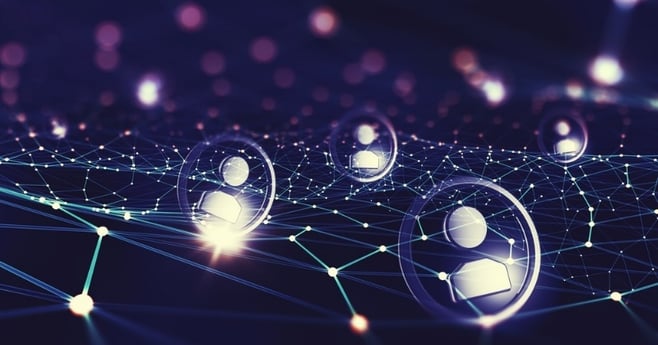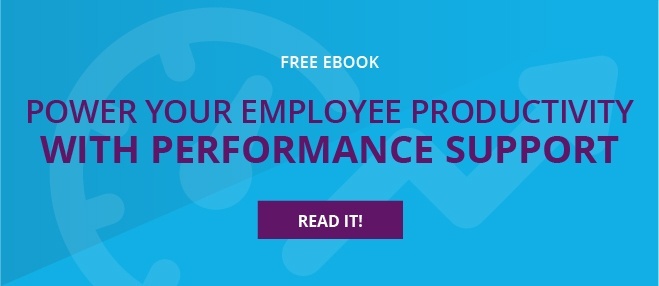Using people analytics to drive business performance: A case study
People analytics, or utilizing data to uncover insights about what drives business performance, is still a fairly new concept, especially in restaurant and retail organizations. However, the insights gained through people analytics can help you challenge your intuition and assumptions about what factors truly impact business success. While experience and intuition will always be valuable to bring to the table, there are certainly insights that can only be gained by understanding people better with data.
McKinsey & Company recently published a case study outlining how a quick-service restaurant chain applied people analytics to their frontline staff - aiming to identify factors that impact metrics like customer satisfaction, service performance and sales. While many members of upper management assumed that certain factors during hiring - such as previous retail experience - were critical indicators of success, they realized after completing the analysis that there was no correlation between previous retail experience and team member performance.
While the biggest challenge is data collection (read the case study for some creative ways to gather data!), the information gained through the exercise can help your organization hire, train, and manage people in the most optimal way for performance. The case study led the quick-service brand to realize that personality (more than previous experience), career development opportunities (more than compensation), and shorter shifts led to better results in terms of customer satisfaction, speed of service, and sales.
A quick-service restaurant chain with thousands of outlets around the world is using data to drive a successful turnaround, increase customer satisfaction, and grow revenues. People analytics—the application of advanced analytics and large data sets to talent management—is going mainstream. Five years ago, it was the provenance of a few leading companies, such as Google (whose former senior vice president of people operations wrote a book about it).
Read the full article on mckinsey.com
Unlock The Value Of Responsive eLearning In The Workplace

With the rise of mobile devices, we have grown accustomed to having access to information anywhere at any time via the search engine on our phones. Access to training content and other role-critical information really shouldn't be any different. Fortunately for organizations who are hoping to modernize training and operations to appeal to younger generations (and improve efficiency) there are many tools available to make content accessible in a mobile environment. Mobile learning tools like PlayerLync are able to incorporate formal and informal learning into one system by delivering formal eLearning courses, assessments, and learning paths, as well as providing access to resources (like video content) that support employees in their less formal, experiential learning. When employees have the ability to seek out the information they need to complete their tasks in the moment, they are able to learn faster, retain more, and feel more confident in their roles.
Responsive eLearning: Embracing New Ways Of Learning Technological advancements have revolutionized the face of training. Today, technology is being used in different novel ways, from manufacturing to controlling home environment with smartphones and other mobile devices. Increasing use of smartphones and tablets have reshaped how learners access information anytime and anywhere.
Read the full article on elearningindustry.com
Demystifying the Connections Between the LMS, LRS, and xAPI

With new technology comes new possibilities. The learning space is rapidly evolving due to advances in course creation, mobility, and a new focus on trends like microlearning and video. If you follow the L&D industry, you've probably heard terms like LRS, LMS, xAPI and others floating around - but might not be sure how they fit into the overall learning ecosystem and why they matter to you and your organization. Learning Solutions Magazine posted a great overview of each of the terms and the roles they play in your overall learning program and I encourage you to check it out!
One distinction that might be especially beneficial is the difference between the LRS and the LMS. The LRS - or learning record store - aggregates learning data, resource usage, and job performance information for reporting. LMS's - or learning management systems - may provide great reporting interfaces but, if like many businesses, you only utilize your LMS for formal learning (and that makes up a small percentage of overall training and learning) you would only be able to track progress for that very small set of activities. An LRS can be utilized to leverage data across various platforms (including xAPI) and capture the entirety of the training process and associated performance. Fortunately, there are systems like PlayerLync that allow you to complete formal training courses like a lightweight LMS, while also leveraging xAPI packages and reporting on that data similarly to an LRS.
Demystifying the Connections Between the LMS, LRS, and xAPI by Brian Carlson, Margaret Roth, Michael Hruska “As xAPI technologies continue to come to the market, it’s important you are ready to take advantage of the benefits they can bring to your organization. By helping you to deliver educational materials at the time they are needed, at lower costs, and—most importantly—in a way that engages learners to better support your outcomes, xAPI is sure to become a critical part of your learning and development programs.” If you’ve attended any learning conference in the last several years, you’ve inevitably heard the buzz around learning record stores (LRSs) and the Experience API (xAPI). With so many sessions and articles focused on the future potential for disruption that these technologies hold, many organization leaders are looking for ways to get started using this data interoperability solution in their own learning ecosystems.





